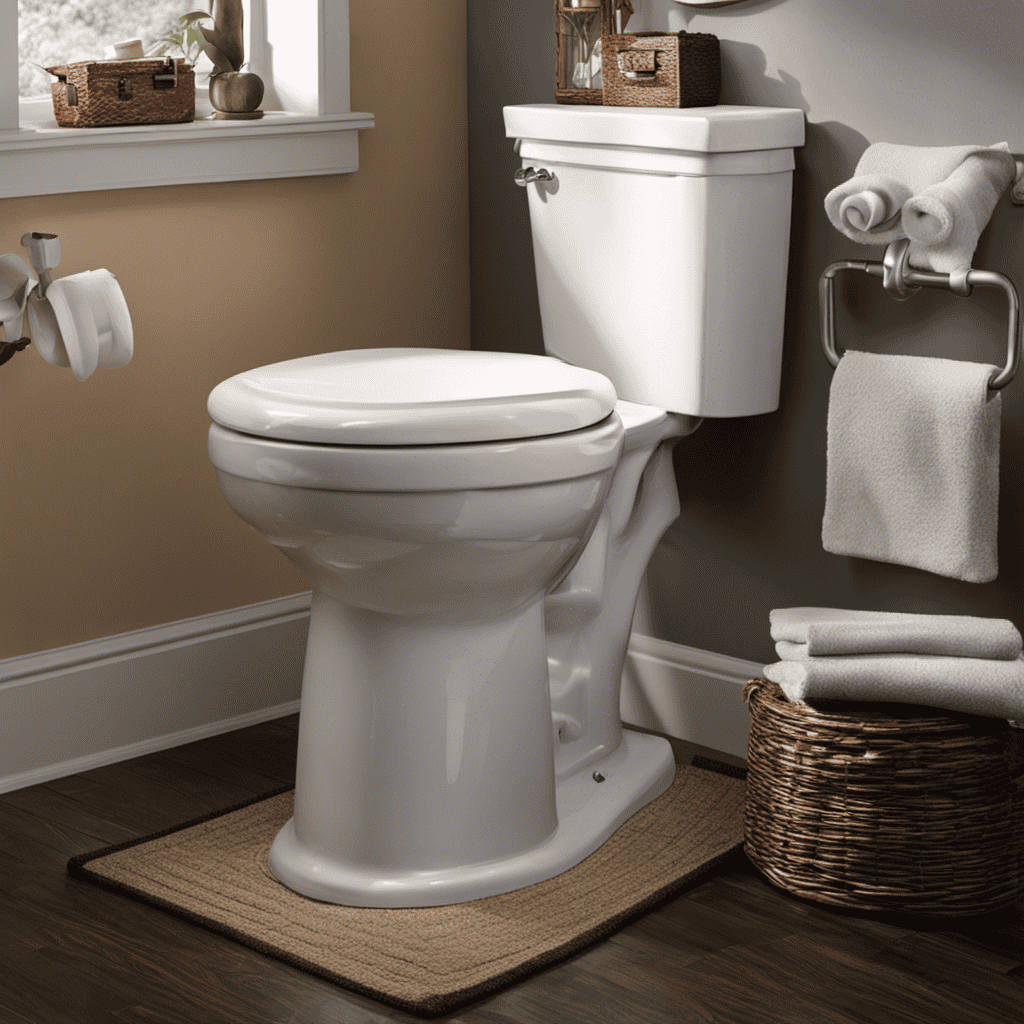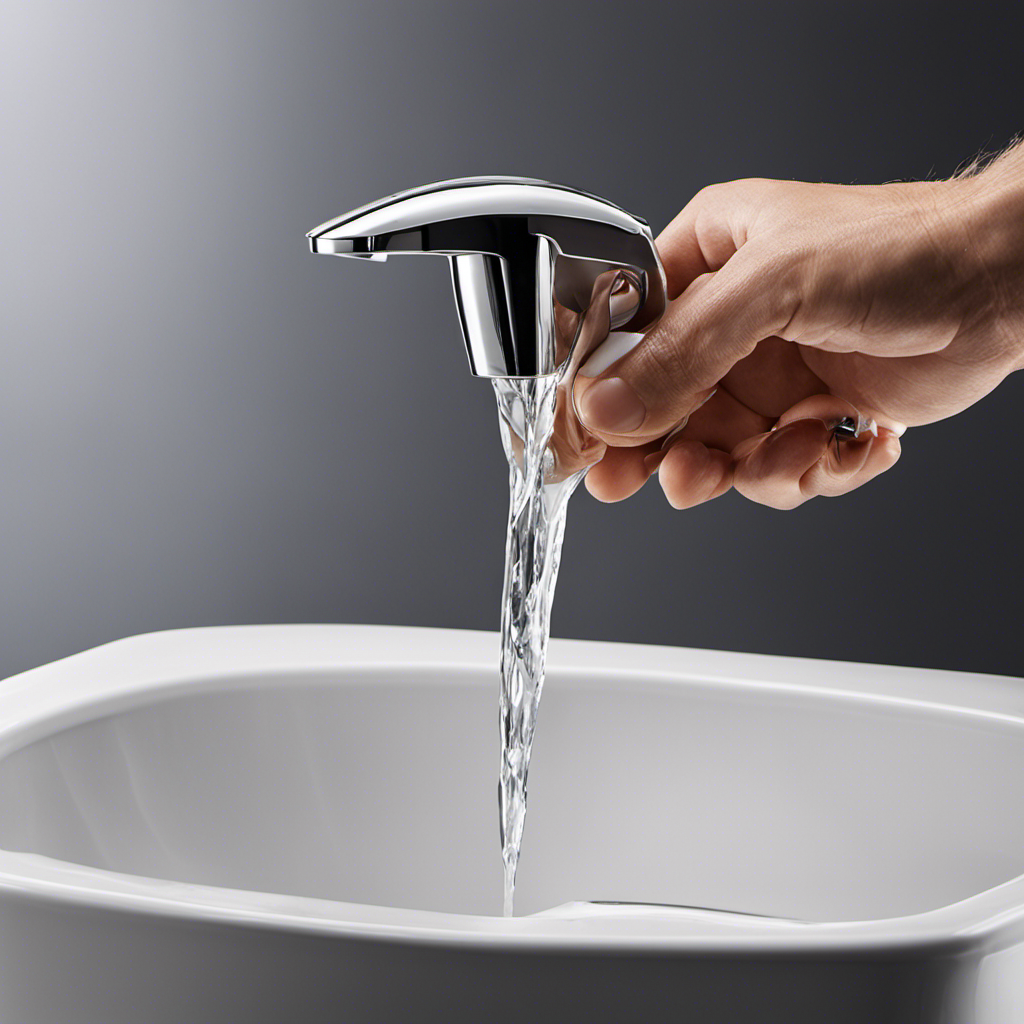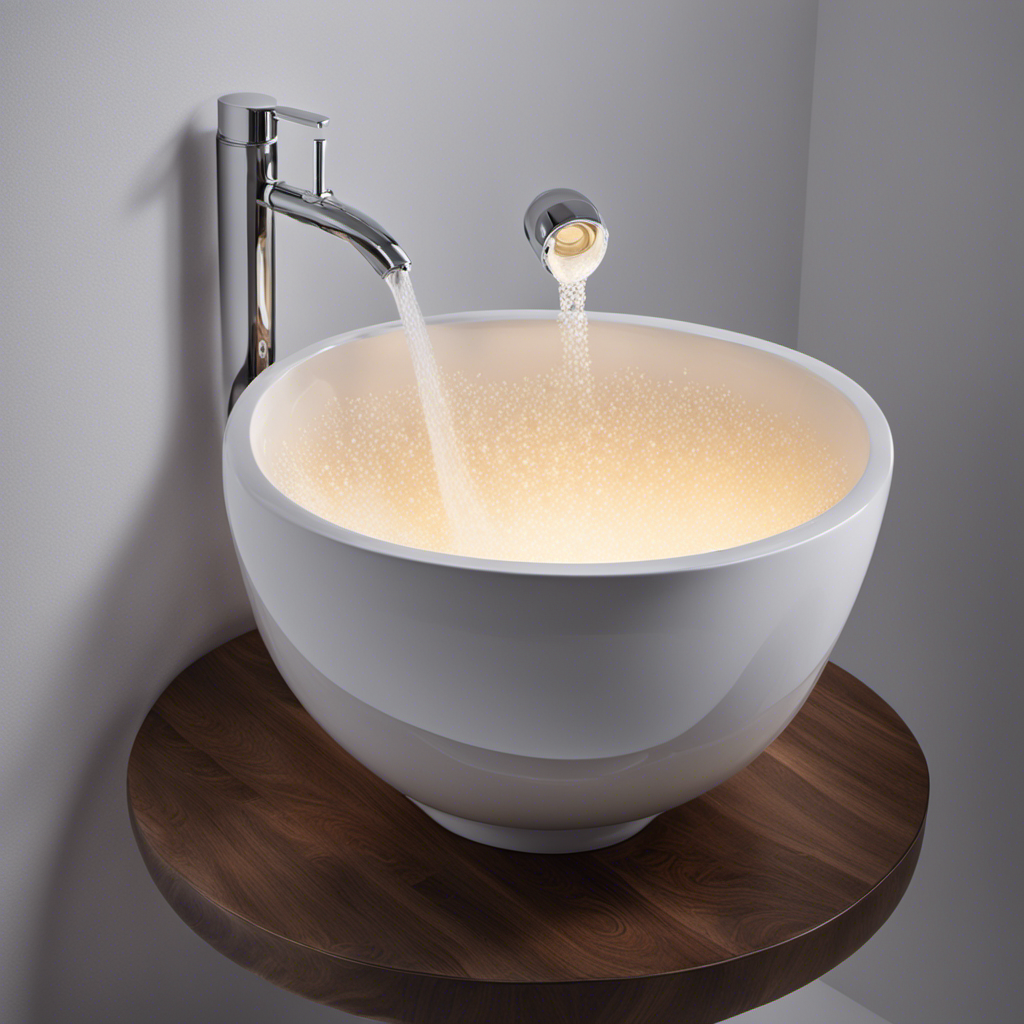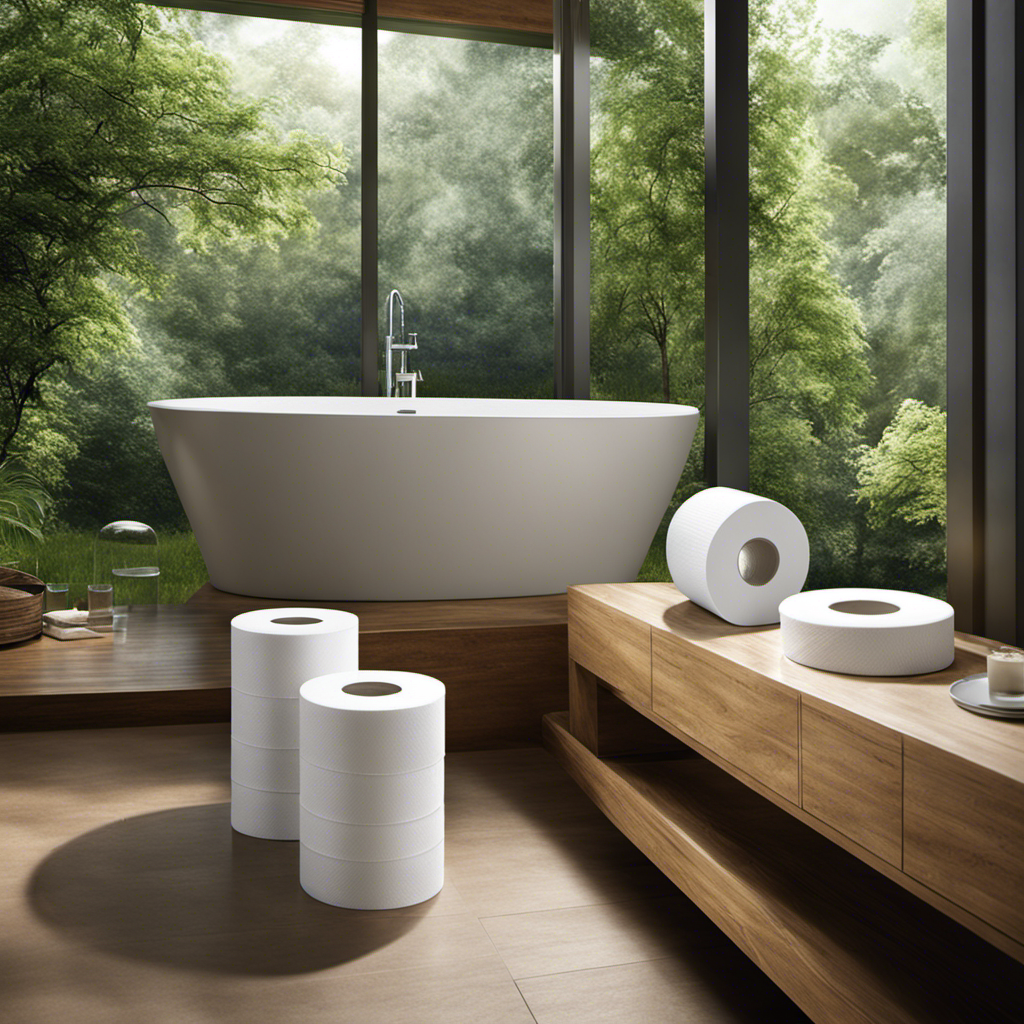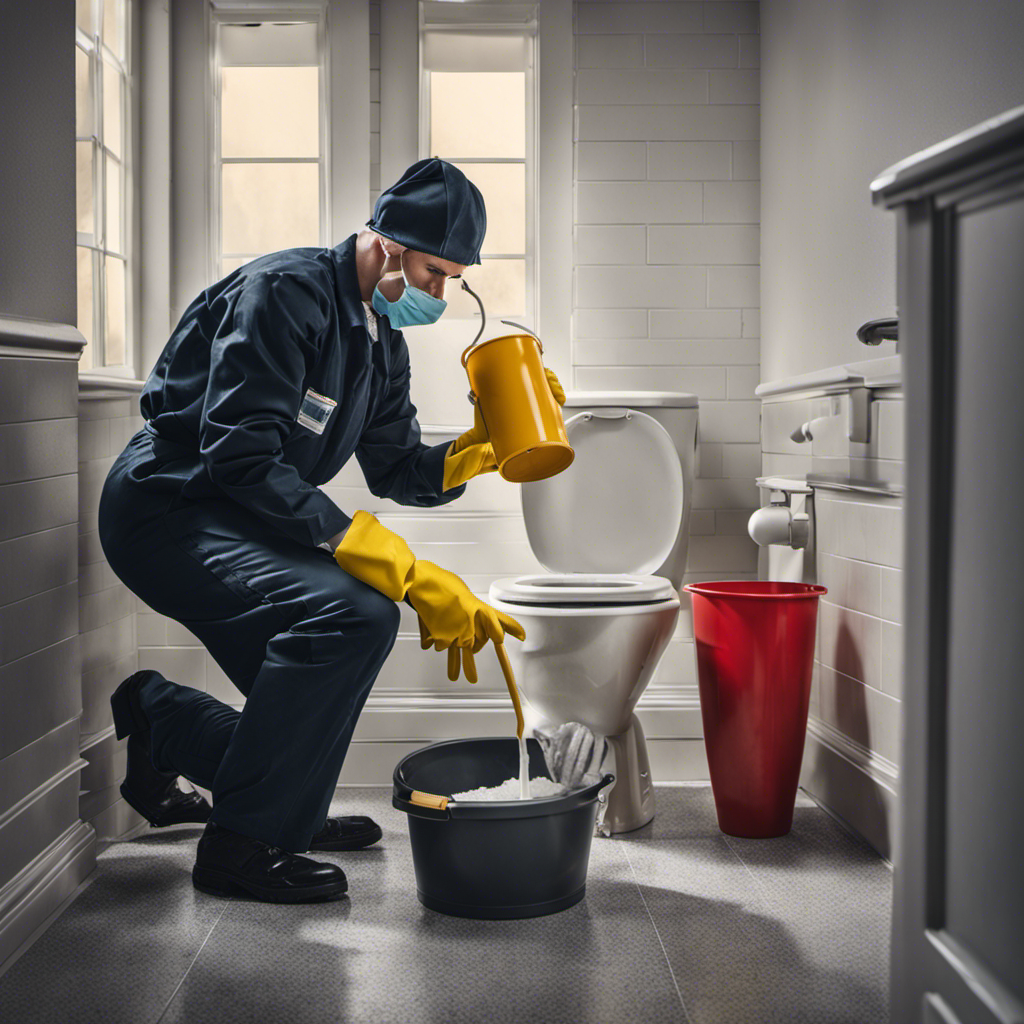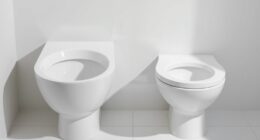I’ve been woken up countless times by the thunderous sound of my upstairs toilet flushing. It’s like a freight train rumbling through my peaceful dreams. But what causes this disruptive noise?
In this article, I will explore the possible causes of loud noise when flushing an upstairs toilet. I’ll provide you with a step-by-step guide to diagnose and fix the problem yourself, as well as some tips to prevent future noise issues.
If all else fails, I’ll also explain when it’s time to call a professional plumber. So let’s dive in and silence that toilet once and for all.
Key Takeaways
- Faulty fill valve and high water pressure are common causes of loud noise when flushing an upstairs toilet.
- Improperly secured water supply lines and using the wrong flapper size can also contribute to noise issues.
- Insufficient water pressure or a faulty flush valve may be additional factors to consider.
- To fix the noise problem, check and tighten the water supply line connection, replace the fill valve if necessary, install a water hammer arrestor, and inspect and tighten any loose pipe connections.
Possible Causes of Loud Noise
One possible cause of the loud noise when you flush the upstairs toilet could be a faulty fill valve. The fill valve is responsible for regulating the water flow into the toilet tank after each flush. If it is faulty, it may not close properly, causing excessive water to flow into the tank. This sudden surge of water can create a loud noise as it fills the tank.
Many people have common misconceptions about toilet noise and tend to overlook the impact of water pressure on noise levels. Additionally, high water pressure can also contribute to noisy flushing. When the water pressure is too high, it can create a forceful flow of water, resulting in a loud noise.
Therefore, it is important to consider both the fill valve and water pressure when troubleshooting noisy toilet flushes.
How to Diagnose the Problem
To diagnose the problem, you’ll want to listen for any unusual sounds when you flush the toilet on the upper level. A loud noise when flushing could be caused by several factors.
One common mistake in DIY toilet repairs is not properly securing the water supply line. Make sure it is tightly connected to the fill valve.
Another common mistake is using the wrong flapper size. If the flapper does not fit properly, it can cause water to rush into the bowl, creating a loud noise.
Additionally, insufficient water pressure or a faulty flush valve can also be the culprit.
It’s important to choose the right toilet for your home to avoid these issues. Consider factors such as water efficiency, flushing power, and noise reduction when making your selection.
Step-by-Step Guide to Fixing the Noise
Start by checking the water supply line to ensure it’s securely connected to the fill valve. If it’s loose, tighten it with a wrench. If that doesn’t fix the noise, move on to the next troubleshooting tip.
Here are some common toilet problems that may cause loud noises:
-
Faulty fill valve: This can result in a whistling or hissing sound when the toilet is refilling after a flush. To fix it, replace the fill valve.
-
Water hammer: This occurs when the water flow is abruptly stopped, causing a loud banging noise. To resolve it, install a water hammer arrestor.
-
Loose pipes: Vibrating or banging noises can be caused by loose pipes. Inspect the pipes and tighten any loose connections.
Tips for Preventing Future Noise Issues
Make sure you regularly inspect the water supply line and pipes to prevent any future noise issues in your bathroom. Noise reduction techniques and plumbing maintenance tips are essential for a peaceful and functional bathroom experience.
To reduce noise, ensure that all water supply lines are securely fastened to the wall or floor. Loose connections can cause vibrations and result in annoying sounds. Inspect the pipes for any signs of wear or damage, such as cracks or leaks. Replace any damaged pipes promptly to prevent future noise issues.
Regularly clean and maintain your toilet to prevent blockages and clogs, which can lead to noisy flushes. Use a plunger or drain snake to remove any debris or buildup in the toilet and pipes.
Additionally, consider installing noise-reducing materials, such as foam or rubber insulation, around the water supply lines and pipes. These materials can help absorb vibrations and reduce noise transmission.
When to Call a Professional Plumber
If you notice persistent leaks or water damage in your bathroom, it may be time to call a professional plumber. Plumbing issues can quickly escalate into emergencies if not addressed promptly.
Here are some signs of a plumbing emergency that should prompt you to seek professional help:
- Burst pipes: A sudden gush of water can cause significant damage to your property and belongings.
- Sewage backup: This can lead to health hazards and requires immediate attention to prevent further contamination.
- Complete loss of water supply: When you have no access to running water, it can disrupt your daily activities and hygiene.
While it may be tempting to try and fix plumbing problems on your own, it’s important to avoid common DIY plumbing mistakes such as using incorrect tools or techniques, which can worsen the situation.
Calling a professional plumber ensures that the issue is properly diagnosed and repaired, saving you time, money, and potential headaches.
Conclusion
In conclusion, troubleshooting and fixing the loud noise when flushing an upstairs toilet can be a straightforward process with the right knowledge and tools. By following the step-by-step guide provided, homeowners can identify and address the possible causes of the noise effectively.
Remember, prevention is key, and implementing the tips mentioned can help avoid future noise issues. However, if the problem persists or seems too complex, it’s advisable to seek the expertise of a professional plumber.
Don’t let the noise drown out your peace of mind; take action today.
